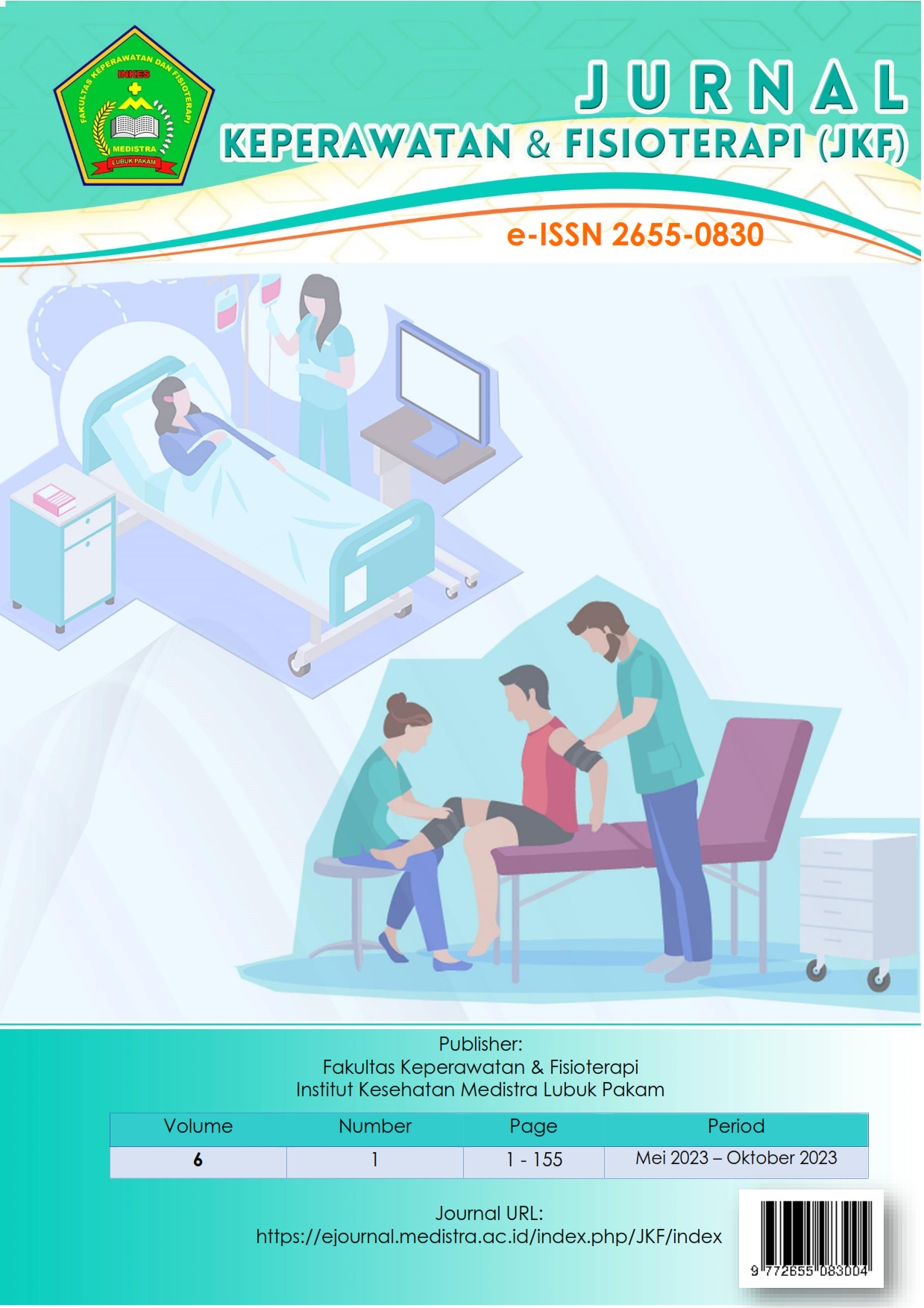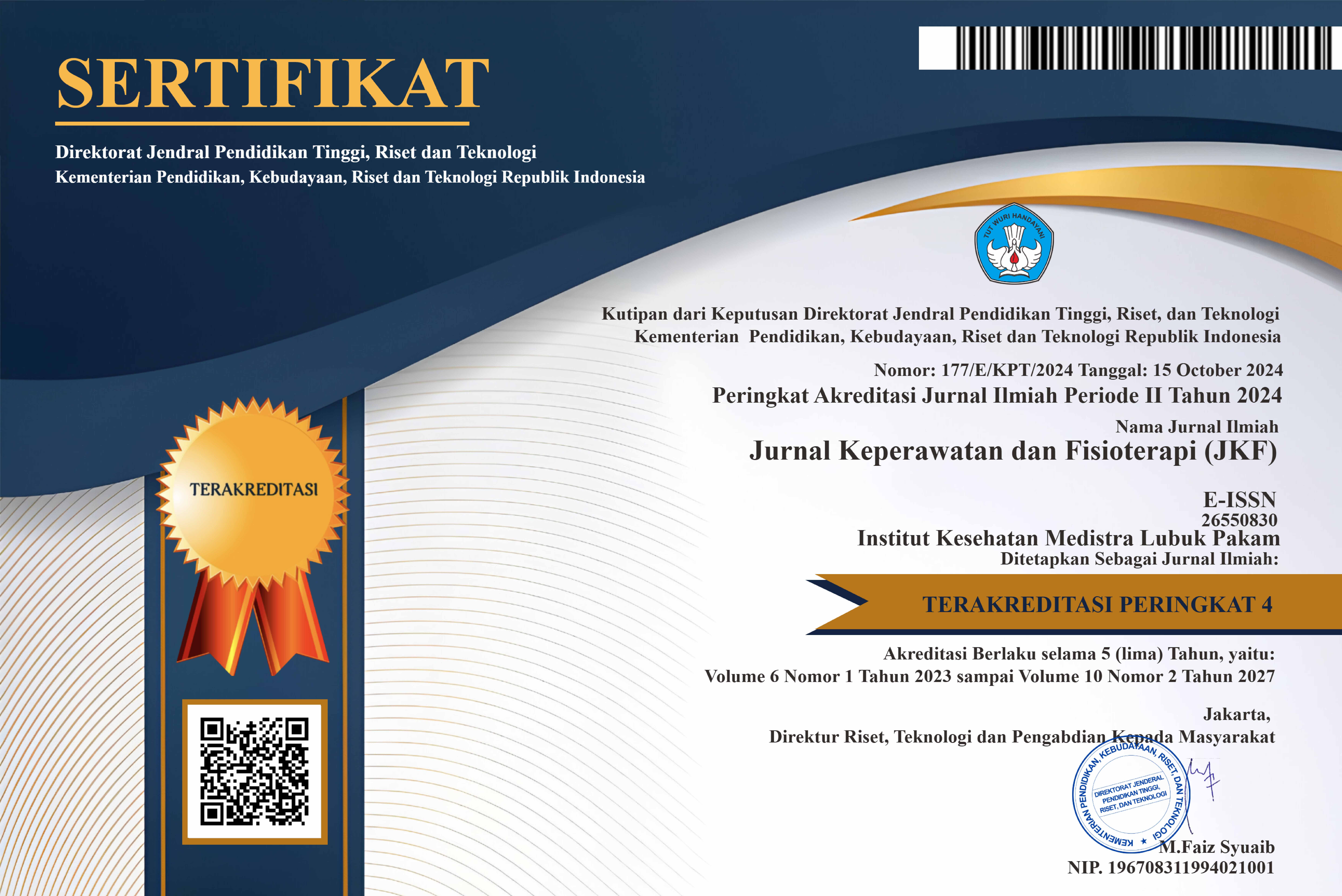The Application of Artificial Intelligence in Predicting Catastrophic Disease Emergencies
Application of Artificial Intelligence in Predicting Catastrophic Disease Emergencies
DOI:
https://doi.org/10.35451/jkf.v6i1.2535Keywords:
Artificial Intelligence, emergency prediction, catastrophic diseasesAbstract
Catastrophic diseases, such as heart attacks, strokes, and acute organ failure, require rapid and accurate prediction to improve emergency response and patient survival. Artificial Intelligence (AI) has been increasingly utilized to enhance diagnostic accuracy and early warning systems in medical emergencies. However, the effectiveness and challenges of AI implementation in emergency prediction remain a critical area of study. This study employed a quantitative method with a retrospective observational analytic design. Data were collected from electronic medical records of 500 patients with catastrophic diseases at RS Grandmed Lubuk Pakam. Univariate analysis was conducted to describe patient characteristics, while bivariate and multivariate analyses were performed using logistic regression to evaluate the predictive capabilities of AI models in emergency cases. The study analyzed data from 500 patients, where AI-based prediction models demonstrated an accuracy rate of 87% in identifying high-risk patients. The Chi-Square test showed a significant relationship between AI predictions and actual emergency events (p < 0,001). Logistic regression indicated that AI-based models were 3.2 times more effective in predicting emergencies compared to traditional methods (p < 0.001). The findings align with previous studies that highlight AI’s potential in enhancing medical decision-making. However, challenges such as data quality, model interpretability, and integration with clinical workflows must be addressed. The study emphasizes the need for further research to optimize AI algorithms and ensure ethical, safe, and effective implementation in emergency medical settings.
Downloads
References
Beam, A. L., & Kohane, I. S. (2018). Big data and machine learning in health care. JAMA, 319(13), 1317-1318. https://doi.org/10.1001/jama.2017.18391
BPJS Kesehatan. (2023). Statistik biaya pelayanan kesehatan penyakit katastropik tahun 2022. Databoks Katadata. https://databoks.katadata.co.id
Esteva, A., Chou, K., Yeung, S., Naik, N., Madani, A., Mottaghi, A., & Topol, E. J. (2021). Deep learning-enabled medical computer vision. NPJ Digital Medicine, 4(1), 1-9. https://doi.org/10.1038/s41746-021-00410-4
Hamet, P., & Tremblay, J. (2017). Artificial intelligence in medicine. Metabolism, 69, S36-S40. https://doi.org/10.1016/j.metabol.2017.01.011
He, J., Baxter, S. L., Xu, J., Zhou, X., & Zhang, K. (2019). The practical implementation of artificial intelligence technologies in medicine. Nature Medicine, 25(1), 30-36. https://doi.org/10.1038/s41591-018-0307-0
Kementerian Kesehatan Republik Indonesia. (2022). Statistik kesehatan nasional 2022. Pusat Data dan Informasi Kementerian Kesehatan Republik Indonesia. https://www.kemkes.go.id
Miotto, R., Wang, F., Wang, S., Jiang, X., & Dudley, J. T. (2018). Deep learning for healthcare: Review, opportunities, and challenges. Briefings in Bioinformatics, 19(6), 1236-1246. https://doi.org/10.1093/bib/bbx044
Rajpurkar, P., Chen, E., Banerjee, O., & Topol, E. J. (2022). AI in health and medicine. Nature Medicine, 28(1), 31-38. https://doi.org/10.1038/s41591-021-01614-0
Topol, E. J. (2019). High-performance medicine: The convergence of human and artificial intelligence. Nature Medicine, 25(1), 44-56. https://doi.org/10.1038/s41591-018-0300-7
World Health Organization (WHO). (2021). Cardiovascular diseases (CVDs). World Health Organization. https://www.who.int/news-room/fact-sheets/detail/cardiovascular
Downloads
Published
Issue
Section
License
Copyright (c) 2023 Suryani .

This work is licensed under a Creative Commons Attribution 4.0 International License.
Copyright in each article is the property of the Author.


























